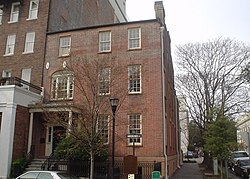This article needs additional citations for verification .(April 2021) |
The following is a timeline of the history of Savannah, Georgia, United States.
This article needs additional citations for verification .(April 2021) |
The following is a timeline of the history of Savannah, Georgia, United States.
| History of the State of Georgia |
|---|
 |
|












{{citation}}: CS1 maint: location missing publisher (link){{citation}}: CS1 maint: location missing publisher (link){{citation}}: CS1 maint: location missing publisher (link){{citation}}: CS1 maint: location missing publisher (link){{citation}}: CS1 maint: location missing publisher (link)